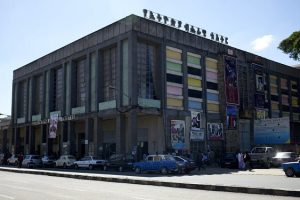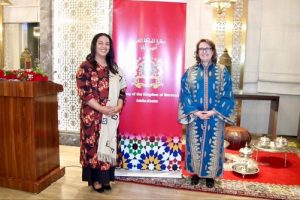BY MULUGETA GUDETA
What makes Ethiopia a unique culture and a unique country is not only her amazing landscape and its fantastic people or their traditional foods and drinks. Ethiopia is also unique in her paintings and representations of life as it is lived by the people and drawn by its world famous artists who have achieved international fame.
From the sophisticated and modernist arts of Wossene Kosrov , Zerihun Yetemgeta, Skunder Bogossia or Gebrekristos Desta to the- down-to-earth naturalist portraits of the late Lemma Guya, Ethiopian paintings are defined or influenced by Ethiopian Orthodox Church paintings in their use of color as well as in their subject matter.
Writing about Ethiopian art, Wikipedia encyclopedia for instance says that, Ethiopian art from the 4th century (i.e. the introduction of Christianity to the country) to the 20th can be divided into two broad groupings.
First comes a distinctive tradition of Christian art, mostly for churches, in forms including paintings, crosses, icons, illuminated manuscripts and other metalwork such as crowns.
Secondly there are popular arts and crafts such as textiles , basketry and jewelry, in which Ethiopian traditions are closer to those of other people in the region. It history goes back to almost three thousand years.
We can say that Ethiopian art was originally spiritual in nature and reflected the faiths and aspirations of people who put God and Biblical themes above all aspects of daily life in the countryside or, later on in modern settings.
Commenting on Ethiopian arts of the early period, the same source we quoted above says that another form of Ethiopian art , also related to Coptic styles, are crosses made from wood and metal. They are usually copper alloy or brass , plated at least originally with gold or silver.
The second feature of Ethiopian art is its secular nature. As the same source says Ethiopia has great ethnic and linguistic diversity and styles in secular traditional crafts that vary greatly in different parts of the country.
There are a range of traditions in textiles, many with woven geometric decoration, although many types are also usually plain. Modern Ethiopian art is mainly distinguished by its break with religious and spiritual themes by starting to be concerned with everyday Ethiopian life as it is lived both in rural areas and in the towns.
According to an article by Sotheby’s, a world-famous art auction house which is largely known for putting on auction masterpieces of the great international painters such as Picasso and his contemporaries, says in one of its advertising pieces, that it is pleased to present one of the strongest selections of Modern Ethiopian Art ever to be offered at auction. Masterpieces by important Ethiopian artists Afewerk Tkele, Skunder Bogossian and Wosen Work Kozrof will be featured in the auction of Modern and Contemporary African Art which will take place in London. Their work is a visual record that communicates the country’s fascinating cultural, artistic and social history.
Modern Ethiopian art is therefore basically and thematically secular. If we look at the modern paintings by Maitre Artists Afewerk Tekle we realize that they largely deal with heroism, African unity (i.e. the large fresco or mural at Africa Hall), and portraits of ordinary men and women of the country.
His painting of a woman breastfeeding a baby is famous, not only for its fine artistic achievement, but also for its theme that as many critics argue, represents mother Ethiopia who is feeding its children. In fact, Afewerk himself has entitled the painting, “Mother Ethiopia” thereby showing his love for the country.
The other iconic painting is the portrait of an Ethiopian warrior who is depicted against the background of a rising sun and distant landscape at dawn with a young man holding his spear with one hand and his knife with the other.
This warrior may not necessarily be a soldier in the modern sense since his clothes are traditional ones. He is likely a ‘desert warrior’ from Afar or Ogaden because the landscape suggest a desert environment. But this is not the case as we shall see below.
The painting is a mosaic of lines and colors traced in geometric patterns, including the face on the portrait. The background colors are dark orange, featuring a rising sun while the landscape is painted blue with spots of green.
The warrior’s garb is white with a faint taint of blue. Judging from his calm facial composure the warrior is different from the fierce-looking soldiers or fighters that are often depicted in other portraits.
Yet, since Afewerk Tekel has called the painting, “Defender of his Country” the above assumption is wrong and the young warrior is a traditional soldier who goes to war with his ordinary and time-honored clothing. The modern Ethiopian soldier is a 20th century man who appeared with the creation of the modern soldiers of the standing army with their battles fatigues.
The fact that Afewerk Tekel was born in Italian-occupied Ethiopia back in 1932, might have influenced his interest in the theme of the warrior in traditional clothing. This is also an expression of his patriotic feeling as an artist who was born and raised at the time of the Italian invasion when people were fighting for their country’s independence with great courage and sacrifice.
The other point is the mosaic or stained glass painting of the warrior which is a technique famously used by Afewerk Tekle to paint one of his lasting achievements back in 1958 when he painted the Africa Hall classic which is now permanently displayed at the headquarters of the United Nations Economic Commission in Addis Ababa.
The other modernist painter is Alexander Skunder Bogossian, who is Afewerk;s contemporary, studied art in London and Paris and was the first contemporary African artist to be collected by the Musee D’art Modern (Museum of Modern Art) in Paris in 1963 and at the Museum of Modern Art in New York in 1965.
Skunder Bogossian returned to Ethiopia in 1966 and taught visual arts at the school of art in Addis Ababa before he moved permanently to the United States in 1974, when the Revolution erupted, and lived and taught there until his death in 2003.
One of Bogossian’s famous painting is entitled Split, which was painted in the wake of the political event back in 1991 when Ethiopia and Eritrea split officially following the UN approved referendum in 1993. Split is a mix of abstract painting with the dominant colors being orange and red. Thematically, Split is a political painting inspired by a historic event that has moved the artist so much that he took up his brushes to preserve the tragic event for eternity.
There is something like desert-like impression that Split leaves in the mind of the onlooker while a closer look features to vaguely visible individuals facing one another or human eyes and legs and bodies appearing separately.
The painting looks a little bit like Picasso’s Guernica, that featured the bombing of the Spanish town of Guernica by the Nazis. The bodies in Split are not dismembered of “cubically” facing one another in overblown proportion to bring home the atrocities committed at that time.
Skunder Bogossian is legitimately called the first modern abstract painter of Ethiopia and rated high alongside the likes of Picasso although his painting hardly won public appreciation here at home due to their sophisticated nature, whose theme cannot be easily grasped by ordinary art lovers.
Wosene Worke Kosrof was born in 1950 was a student of Skunder Bogossian at Howard university. He is mainly famous for painting artistic works with “interlocking and interweaving letters from the ancient Ge’ez alphabet which is the basis of two of Ethiopia’s main languages, namely Amharic and Tigrigna.
Wosene’s other notable themes are ordinary everyday activities such as drinking coffee or playing cards. One of his painting is called Coffee the Ethiopian Ceremony and has won him acclaim. The painting is not a naturalist exposure of people sitting around the coffee and cups and enjoying their beverage.
On the contrary, it is a modernist portrayal sitting, standing and a woman holding the tray that is carrying the snack that is indispensable for the coffee ceremony.
The painting looks blurred and the people are portrayed in a disorderly manner while the dominant colors are yellow, blue and red while the hairs of the people are black dots that can hardly be seen in the sea of geometric figures and colors.
One of Wossene’s famous paintings is a collection of small rectangular figures dotted with Amharic alphabets and hardly-visible human figures which are portrayed in black and white while the dominant color is also black and white with a small Ethiopian flag features at one corner with green, yellow whose vividness give the flag a visibility out of proportion with its small size.
As one commentary on his work maintains, Wossene is best known for his inventive renderings of the Amharic script and he is the first Ethiopian-born contemporary artist to incorporate these script symbols as a core aesthetic element in fine art paintings. His recognizable “signature” emerges by distorting, dissecting and elongating, dissecting and reassembling the symbols as images.
To wrap up our discussion, both traditional and modern Ethiopian arts have something in common in their use of color for instance like yellow, red green and blue dominating the other colors. This may or may not be a reflection of the country’s bright natural landscape that is almost always illuminated by the sun which is always present in the artists’ visualization of their works.
The few artists depicted above are only a handful of many famous painters who enjoy international acclaim while the above three had made their way into the international art galleries as well as auction houses like Sotheby’s where their works are considered for sale.
The younger artists are gaining immense experience and inspiration from the masters who are immortalized by their works. But they have so far failed to produced something remotely matching the masters.
And this should be taken a big challenge for the new and upcoming artists who aspire to dominate the international art market and achieve fame and fortune. This may seem a remote possibility but since older Ethiopian artists have done it, there is no reason why the younger ones will not repeat their history by producing works of arts that we shall all be proud of.
The Ethiopian Herald February 27/2021





